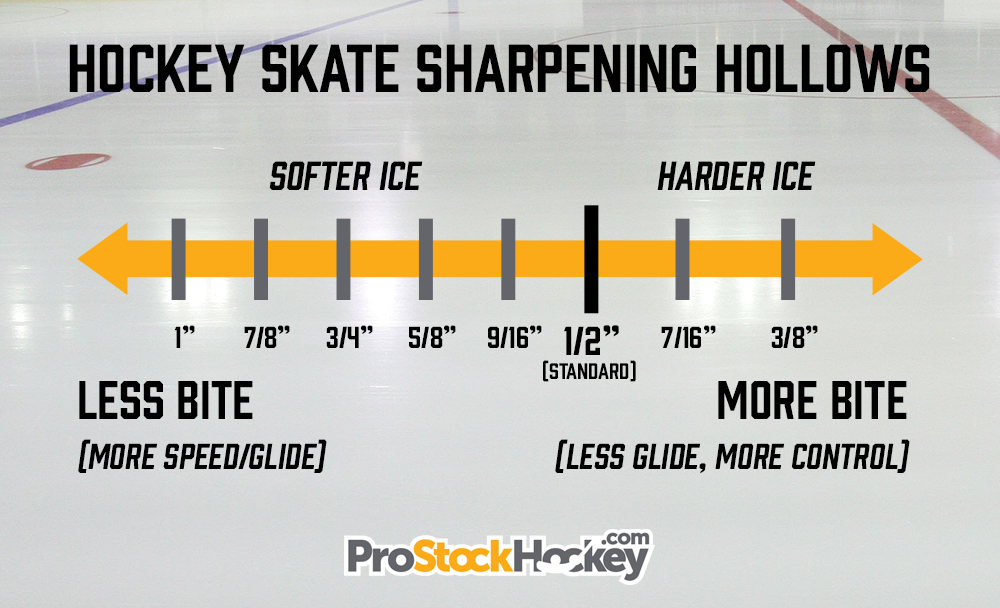Types of Hockey Skate Sharpening Hollows
Posted by AJ Lee on 04 29 2021
It’s a commonly overheard exchange in your rink’s pro shop…
Player: “Hey, I’d like to get these sharpened.”
Clerk: “Ok, how’d you like them cut?”
Player: “Uhh…standard?”
While there’s absolutely nothing wrong with a standard cut (it’s “standard” for a reason), it's beneficial to learn the different types of skate sharpening options and which one might be the best fit for you.
How Skate Sharpening Works
First off, let’s explain what is actually going on the bottom of those skate blades. Unlike most other knife-like objects with a single sharp edge, skate blades have two sharp edges that are connected by a hollowed-out region in between.
This hollowed-out region is created by passing the skate blade along a grinding wheel. The shape of the grinding wheel’s surface determines the size of the hollow on your skate blade. In turn, the size of the hollow on your skate blade will affect how the skate feels and performs on the ice.
Different Types of Skate Sharpening Hollows
There are several different types of hollows to choose from, but pro shops will commonly use 1/2” as their “standard” cut. The 1/2” hollow offers a respectable mix of glide and control for most players but adjusting the depth of the hollow can offer several benefits when done correctly.
For example, a lighter player can benefit from a deeper hollow (7/16" or 3/8") by providing them with the ability to cut deeper into the ice. This type of sharpening provides more bite for the user, allowing for more responsive turns/stops and quicker overall acceleration. However, it does allow for more energy to be lost into the ice and will slightly reduce the user’s top speed.
A more shallow hollow (5/8” or 3/4”) can benefit a heavier player – someone who doesn’t need any additional help digging into the ice. The flatter cut allows for less energy to be lost into the ice, allowing for more glide and a greater top speed. This type of sharpening will slightly diminish the ability to make quick, sharp turns and quickly accelerate.
The image below lists several of the more common hockey skate sharpening hollows that are often offered at skate shops. (Note: There are several other options NOT listed here that may also be available depending on your local shop.)

The quality of the ice is yet another factor to consider!
If your local rink has notoriously soft ice, you may want to go with a shallow hollow to keep from digging too far into the ice. This will help you maintain speed and maximize glide. If you typically play at a rink with harder ice, try a deeper hollow to really help cut into the ice on sharp turns and improve your acceleration.
So next time you’re asked, “How’d you like them cut?” maybe try out a new hollow to see if it makes a difference.
Or not.
It’s up to you.
